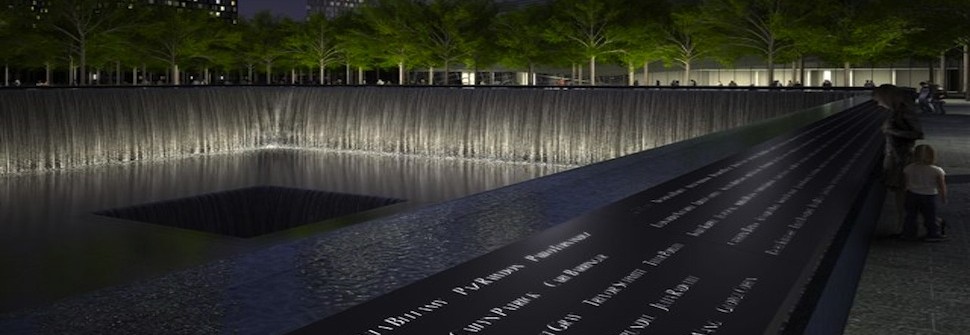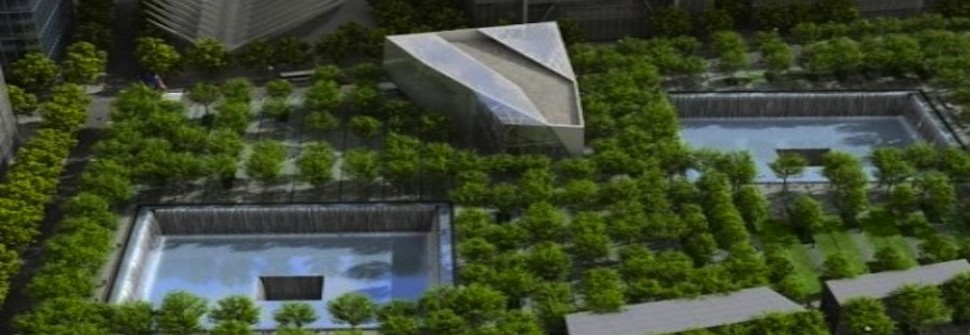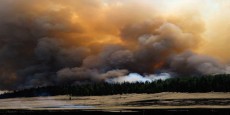From a green roof to locally harvested trees, the National September 11 Memorial and Museum opens on the 10th anniversary of the attack on the World Trade Center with a dedication and much media coverage of every angle, including Steven Spielberg’s The Rising: Rebuilding Ground Zero. Despite delays, this moving site centers on two dramatic waterfalls and reflecting pools in the footprints of the Twin Towers as the focus on the 16-acre site for contemplation and the commemoration of 9/11. The sustainable features in the design were intended to be viewed as a sign of hope.
The 9/11 Memorial designed by architect Michael Arad and landscape architect Peter Walker, their proposal was selected from 5,200 submissions from 63 countries in a global competition. Bronze panels are inscribed with the names of those who died on September 11th and the 1993 bombing at the World Trade Center, surrounding the two 60-foot deep pools — described as “large voids, open and visible reminders of the absence.”
A grove of more than 400 swamp white oak trees on the Plaza creates a peaceful green space that serves as a green roof for the 9/11 Memorial museum, the train station and other facilities 70-feet below street level. The selection of these durable deciduous trees are meant to represent the renewal of life in their natural cycles, from full foliage to turning various colors in autumn to leafless in winter.
The water-conserving irrigation system includes stormwater capture in underground storage tanks to saves energy and resources. A suspended paving system supports the trees with soil-filled troughs and pavement for walking. The space is seeking LEED Gold certification. The plaza also meets the environment-conscious practices required by New York State Executive Order 11 and the WTC Sustainable Design Guidelines.
In addition, one new structure at the World Trade Center site that has replaced a fallen building, features a sophisticated system that generates off-peak electricity and composts paper waste.
The trees were harvested from within a 500-mile radius of the World Trade Center site, with some from locations in Pennsylvania and near Washington, D.C.– areas also impacted on September 11th. Growing to different heights and up to 60-feet, the trees are reminders that they are living individuals. The Plaza’s urban woods accompanies nearby green spaces from Battery Park to City Hall Park, churchyards as well as the upcoming Liberty Park south of the Memorial, a respite in the city, albeit a solemn one that seeks to be uplifting.
An impressive slide show of the museum and plaza is available on the September 11 Memorial & Museum website as well as visitor’s passes to this free public place.
HIT FROM: Treehugger.com















